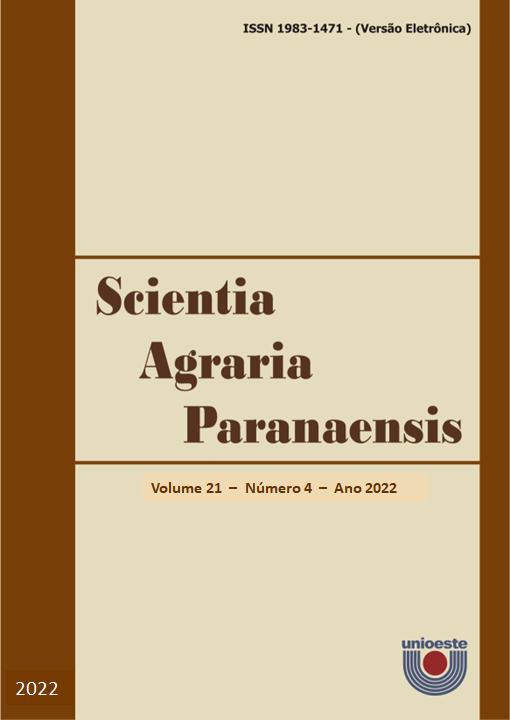Remaining straw on soil fertility and sugarcane productivity in the cutting periods
DOI:
https://doi.org/10.18188/sap.v21i4.29990Resumo
The straw remaining from the sugarcane harvest can influence soil fertility and the crop in the field, depending on the amount and time these residues remain in the soil and the relationship they establish. with abiotic factors and microorganisms that act in the process. The objective was to identify the remaining straw levels (0; 5; 10 and 15 Mg ha-1) on soil fertility keep and sugarcane productivity (third cutting), in tree periods cuttings - 1 (variety RB 855156), 2 (variety RB 835486) and 3 (variety RB 835054). For chemical attributes, samples were collected from soil with deformed structure at depths of 0-5; 5-10; and 10-15 cm, after the sugarcane harvest in 2012, before the establishment of the straw levels (initial) and after the ratoon harvest in the 2013 harvest (final), in periods cuttings 1, 2 and 3, respectively. the maintenance of 15 Mg ha-1 of crop residues does not increase nutrient levels in the surface soil layers, nor does it result in a reduction in organic matter values in the surface soil layers after one year of sugarcane cultivation, even with the complete removal of crop residues. There is feasibility for partial removal of crop residues without affecting soil chemical attributes in the subsequent crop season, considering that the maintenance of 5 Mg ha-1 promotes maximum productivity of stalks and sugars in the late-season harvest (3rd period).
Downloads
Publicado
Como Citar
Edição
Seção
Licença
Aviso de Direito Autoral Creative Commons
Política para Periódicos de Acesso Livre
Autores que publicam nesta revista concordam com os seguintes termos:
1. Autores mantém os direitos autorais e concedem à revista o direito de primeira publicação, com o trabalho simultaneamente licenciado sob a Licença Creative Commons Attribution que permite o compartilhamento do trabalho com reconhecimento da autoria e publicação inicial nesta revista.2. Autores têm autorização para assumir contratos adicionais separadamente, para distribuição não-exclusiva da versão do trabalho publicada nesta revista (ex.: publicar em repositório institucional ou como capítulo de livro), com reconhecimento de autoria e publicação inicial nesta revista.
3. Autores têm permissão e são estimulados a publicar e distribuir seu trabalho online (ex.: em repositórios institucionais ou na sua página pessoal) a qualquer ponto antes ou durante o processo editorial, já que isso pode gerar alterações produtivas, bem como aumentar o impacto e a citação do trabalho publicado (Veja O Efeito do Acesso Livre).
Licença Creative Commons
Esta obra está licenciada com uma Licença Creative Commons Atribuição-NãoComercial-CompartilhaIgual 4.0 Internacional, o que permite compartilhar, copiar, distribuir, exibir, reproduzir, a totalidade ou partes desde que não tenha objetivo comercial e sejam citados os autores e a fonte.


